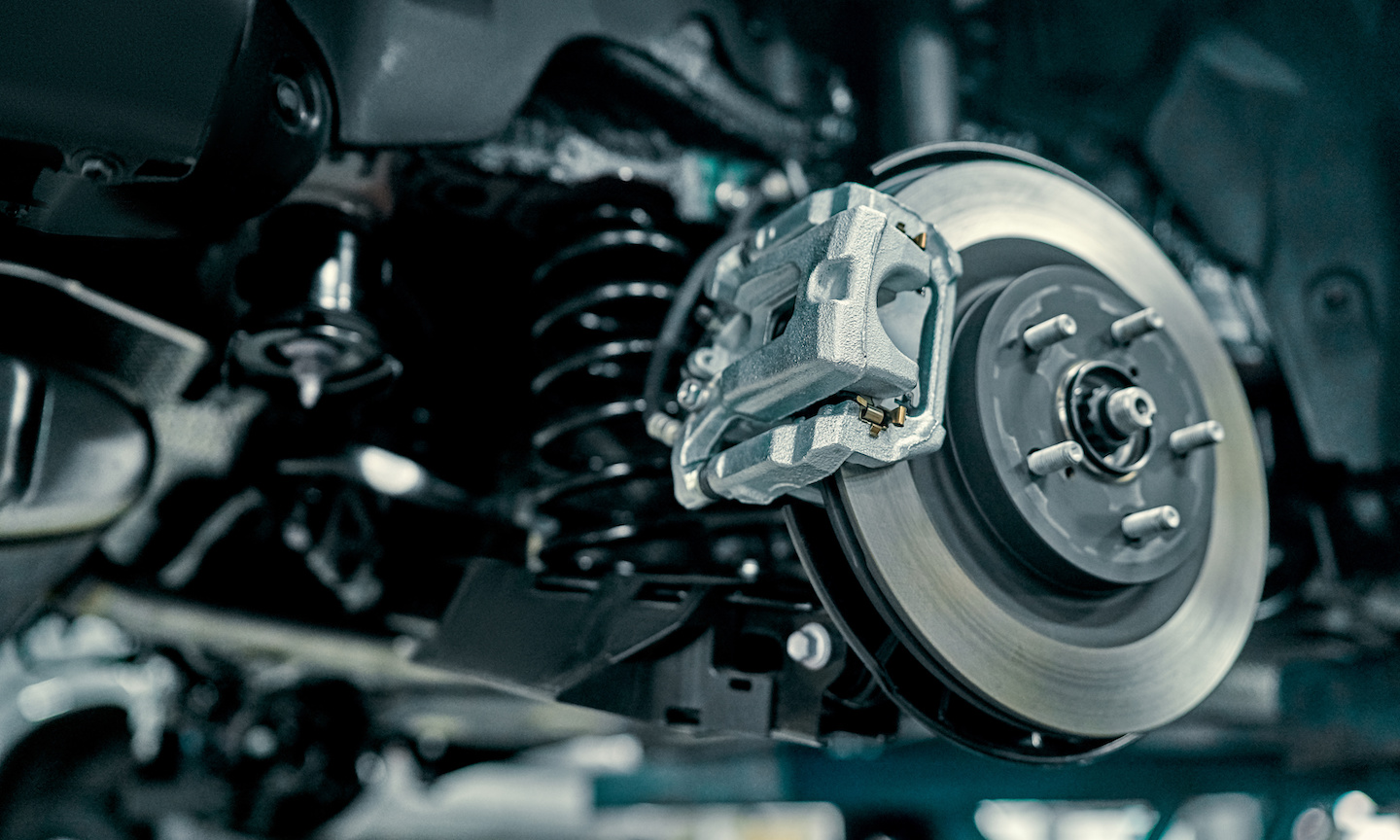Everything You Need to Know About Brakes

Brakes don’t attract much attention—until you need them. If they’re working correctly, your car will come to a smooth, consistent stop, even in an emergency. However, neglecting them could be very costly. The Heritage CDJR Harrisburg, Owings Mills & Parkville service team recommends having your brakes inspected every time you have your oil changed to prevent any issues.
Brake basics and types
Braking is all about friction: the business of pressing a stationary material against a moving surface and converting kinetic energy into heat. This is the principle used by the brakes of a bicycle, but a car's brakes are a little different.
Unlike a bike, the brake material in a car is not pressed directly against the wheel but against a second surface that rotates with the wheel. This second surface can take one of two forms. In older and less expensive vehicles, there’s a brake drum behind each of the rear wheels. Although it’s called a drum, it can be pictured as a top hat, with the wheel mounted on the closed end.
Inside the drum are two curved “shoes” lined with friction material. When the wheel is turning, the shoes are held just off the surface of the drum. But press on the brake pedal and hydraulic fluid transfers that force to the shoes, pushing them outwards so that the friction material presses against the rotating drum. The harder the pedal is pressed the more force the shoes apply, and the quicker the wheel stops turning.
At one time, all brakes were of this drum design, but today almost every vehicle uses disc brakes at the front wheels. More expensive cars, especially high-performance models, use disc brakes all around. In a disc system, a rotor—the disc—is mounted behind and turns with the wheel. A caliper holding two pads of friction material—the brake pads—is mounted over the rotor so that when the brakes are applied, the pads pinch the disc. As with the shoes, in normal conditions, the pads are held just off the surface. During braking, hydraulic pressure pushes them together, slowing the rotation.

Braking issues to watch out for
So how do you know when the brakes need servicing? This can usually be judged by how the brake pedal feels under your foot.
- A pulsing feel usually suggests a warped rotor and should be replaced at the dealership.
- If the pedal feels soft or spongy rather than becoming hard when pushed, air has likely gotten into the hydraulic system. This reduces the braking power, and the vehicle should be taken to the dealership immediately.
- Should the pedal go all the way to the floor with no resistance, stop immediately (foot off the gas, transmission into neutral, turn off the engine if necessary, and pull on the emergency brake) then call for help.
Fortunately, brake failure is very rare. What’s more common is worn friction material. One sign of this is increased brake pedal travel, but that can go unnoticed until the friction material is gone completely, resulting in a loud screeching when the brakes are applied and possibly a rather large repair bill. This can be avoided by having pads and shoes inspected regularly at the dealership and replaced as necessary.
People tend not to think about brakes until an emergency arises. Don't leave it until then to find out if yours are in good shape—contact the Heritage CDJR Harrisburg, Owings Mills & Parkville service team online today to schedule an appointment.
